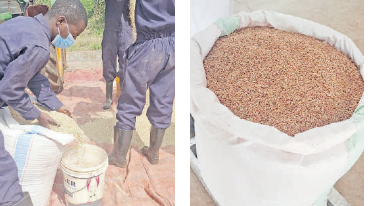

Kenya partners with Korea to boost rice production and reduce imports
Kenya is seeking to increase local rice production to reduce reliance on imports, which currently account for over 80 per cent of the country’s rice consumption.
Dr. Eliud Kireger, Director General of the Kenya Agricultural and Livestock Research Organisation (KALRO), said rice consumption is growing, especially among the younger generation, who are shifting away from traditional staples like ugali.
“Currently, we produce very little rice and import most of what we consume. Kenya imports 80 per cent of the rice to meet the annual demand. In 2024, rice imports were valued at Sh67.9 billion,” he said.
Kireger was speaking during a one-day symposium on rice production, where stakeholders gathered to discuss how to boost local output. He said KALRO has partnered with the Korean government to develop a sustainable rice seed system in Kenya.
“To increase production, we need to focus on quality certified seed. While we have local varieties, the Koreans have developed high-yielding, high-quality rice types,” Kireger said.
He added that testing of Korean varieties has begun, and certified seed production facilities have already been set up at KALRO Mwea. The aim is to empower farmers to raise their yields from the current 2.5–3 tons per hectare to 4.5–7 tons per hectare.
“Bridging the import gap will require significant effort and investment,” he said. “We are developing state-of-the-art rice production fields and seed processing infrastructure with support from Korea, including seed cleaning and storage facilities.”
He said the total investment over the next five years is around Sh2 billion, covering research, land preparation, seed production and post-harvest handling.
Dr. Ruth Musila, KALRO Mwea Center Director and Principal Investigator of the KALRO-KOPIA project, said through the project, researchers have selected three promising rice varieties: Ukafaci 39, ISRIZ 6, and ISRIZ 7.
“These varieties are currently undergoing national performance trials. We expect final results by January 2026,” she said.
Musila added that the new varieties are high-yielding going up to 7.5 tons per hectare and adaptable to both irrigated and rain-fed conditions.
“We are only able to supply 20 per cent of what I consumed in the country while the deficit is imported. We want to be at 30 per cent self-sufficient by the time the project ends,” she said.
Eunha Yoo, Director of the KOPIA Division at Korea’s Rural Development Administration (RDA), said they are supporting seed production, technology transfer, and training under the 'Africa K-Ricebelt' initiative, part of the Rice Seed Production Improvement in Africa (RiceSPIA) project.
The K-Ricebelt project aims to establish a unified high-yield rice seed system across seven African countries: Kenya, Senegal, Gambia, Guinea, Ghana, Cameroon, and Uganda.
“Starting with 2,000 tons of seed in 2023, we reached 3,562 tons in 2024, surpassing our target. By 2027, we aim to produce and distribute 10,000 tons of rice seed annually across these countries,” said Yoo.
The 2025 International Rice Symposium provided a platform to discuss progress, challenges, and future plans under the project.
“If successful, the RiceSPIA project will increase rice self-sufficiency and reduce imports, while improving farmer incomes and ensuring a stable food supply,” Yoo added.











